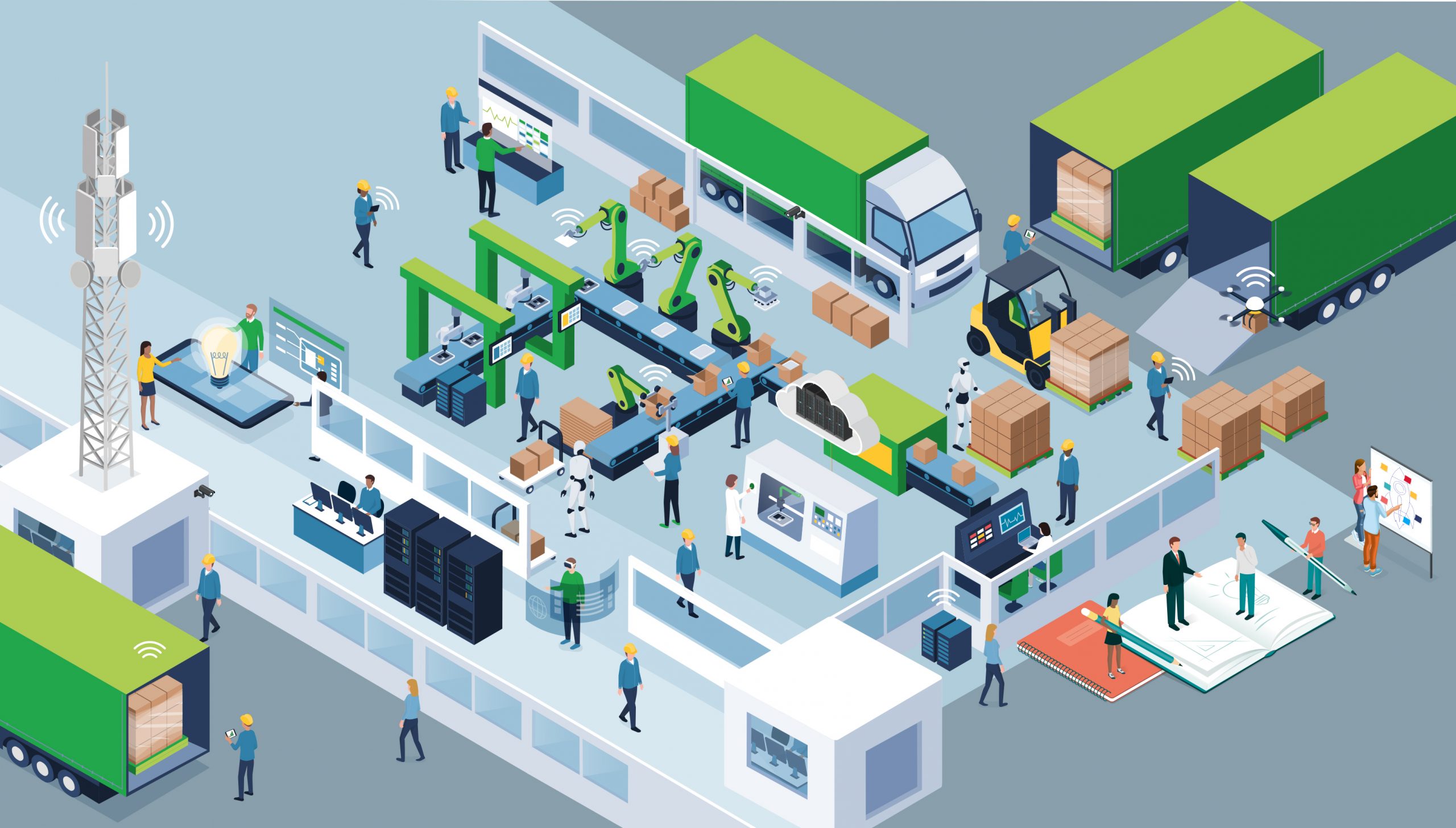Earlier this year, a report by Vodafone and WPI – ‘Connecting for Net Zero: addressing the climate crisis through digital technology’ – explored how existing technologies, such as Internet of Things (IoT) and 5G, could substantially reduce greenhouse gas emissions in three key sectors: agriculture, manufacturing, and transport.

According to the report, adopting 5G and IoT could hold the key to reducing UK carbon emissions by 78% by 2035, while deploying new digital technologies in manufacturing, transport and agriculture alone would potentially cut overall emissions by as much as 4% a year.
That’s the equivalent of 17.4 million tonnes, or the annual emissions of the entire North East of England!
The figures are undeniably staggering. So how would those changes be achieved?
The answer is through using data and information from 5G digital connections and IoT devices to monitor, calibrate and adapt transport systems, energy and water grids, manufacturing plants and agriculture, not only increasing productivity but also reducing the CO2 they emit.
So what does this look like in real life?
For the transport industry, 5G powered IoT devices could be used to help delivery companies plan smarter, shorter routes and cut idling times. Sensors in the roads are already used to control traffic flow to some extent but 5G technology means this can now be turbocharged, offering the possibility of reducing fuel consumption and cutting millions of tonnes a year of CO2 emissions from our roads.

In our factories, using Artificial Intelligence and machine learning in conjunction with smart building solutions has already been proven to make production lines faster and more energy efficient, as well as helping reduce waste through better quality and inspection processes. At a rough calculation, the end result could reduce in the region of 3.3 million tonnes a year in CO2 emissions, or the equivalent emissions created by manufacturing 600,000 cars.
Monitoring technologies are at the heart of many of these initiatives, with 5G networks enabling up to 50,000 devices, such as sensors and actuators, to be connected to a single network or cell.
The power of 5G also allows companies to create larger and more detailed ‘digital twins’ – systems that aggregate and present data from a remote system to inform future decision making. By pairing physical assets and processes with a virtual representation and functional output, companies can manage their assets in a ‘greener’ manner by identifying unnecessary waste more quickly and easily.
Manufacturing supply chains have traditionally been fragmented with limited and poor quality data sharing between businesses resulting in material and energy being wasted at every step. However, interest is now growing in technologies such as blockchain that can be used to align supply chains more securely and encourage greater collaboration and transparency between supply chain partners.
Of course, many of these new approaches require investment in new technology and machinery, but it’s important to remember that improvements can also be made by retrofitting new technologies to legacy equipment – significantly reducing the initial outlays required and allowing businesses to ‘start small’ and grow their energy efficiency road maps from there. Deploying low-power sensors to identify the sources and scale of carbon emissions, for example, is a simple first step all business can take to move towards a more sustainable manufacturing operation.
The UK has set out ambitious carbon reduction targets for all areas of society if we’re to achieve Net Zero by 2050, and with the Climate Change Committee outlining targets of 70% reductions by 2035 and 90% by 2040, those deadlines are closer than we may care to think.
There’s plenty more potential beside, as well as things we haven’t even thought of yet.
But while the scale of the challenge may seem overwhelming, the arrival of 5G offers real possibilities for business – and manufacturers in particular – to grasp the nettle and start taking small steps that will not only help them meet their environmental obligations but also improve efficiency and open up new potential revenue streams too. You can start with a single, easy-to-deploy project and build from there. After all, meeting Net Zero is likely to be the result of the accumulation of marginal gains and there’s no reason we can’t take our first steps now.
Contact us to find out how nexGworx can help your business realise the power of 5G to reach your company’s Carbon Zero targets.


